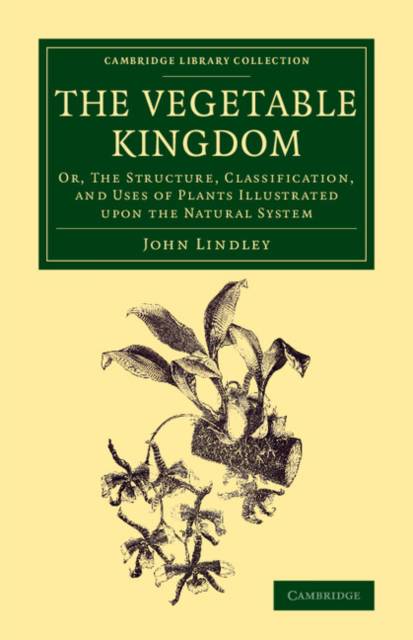
Door een staking bij bpost kan je online bestelling op dit moment iets langer onderweg zijn dan voorzien. Dringend iets nodig? Onze winkels ontvangen jou met open armen!
- Afhalen na 1 uur in een winkel met voorraad
- Gratis thuislevering in België vanaf € 30
- Ruim aanbod met 7 miljoen producten
Door een staking bij bpost kan je online bestelling op dit moment iets langer onderweg zijn dan voorzien. Dringend iets nodig? Onze winkels ontvangen jou met open armen!
- Afhalen na 1 uur in een winkel met voorraad
- Gratis thuislevering in België vanaf € 30
- Ruim aanbod met 7 miljoen producten
Zoeken
The Vegetable Kingdom
Or, the Structure, Classification, and Uses of Plants Illustrated upon the Natural System
John Lindley
€ 143,45
+ 286 punten
Uitvoering
Omschrijving
Employed early in his career by Sir Joseph Banks, the botanist John Lindley (1799-1865) is best known for his recommendation that Kew Gardens should become a national botanical institution, and for saving the Royal Horticultural Society from financial disaster. As an author, he is best remembered for his various works on taxonomy and classification. This work, one of his most famous, was first published in 1846; reissued here is the revised third edition of 1847. Lindley describes his motive as being 'to make his countrymen acquainted with the progress of Systematic Botany abroad' given that the 'superficial and useless system of Linnaeus' was now consigned to history. The work, nonetheless an important milestone in the development of plant taxonomy, gives an overview of the various classification systems used since that of John Ray, and goes on to define the vegetable kingdom in terms of classes and 'alliances' of plants.
Specificaties
Betrokkenen
- Auteur(s):
- Uitgeverij:
Inhoud
- Aantal bladzijden:
- 986
- Taal:
- Engels
- Reeks:
Eigenschappen
- Productcode (EAN):
- 9781108077224
- Verschijningsdatum:
- 5/03/2015
- Uitvoering:
- Paperback
- Formaat:
- Trade paperback (VS)
- Afmetingen:
- 140 mm x 216 mm
- Gewicht:
- 1224 g

Alleen bij Standaard Boekhandel
+ 286 punten op je klantenkaart van Standaard Boekhandel
Beoordelingen
We publiceren alleen reviews die voldoen aan de voorwaarden voor reviews. Bekijk onze voorwaarden voor reviews.











